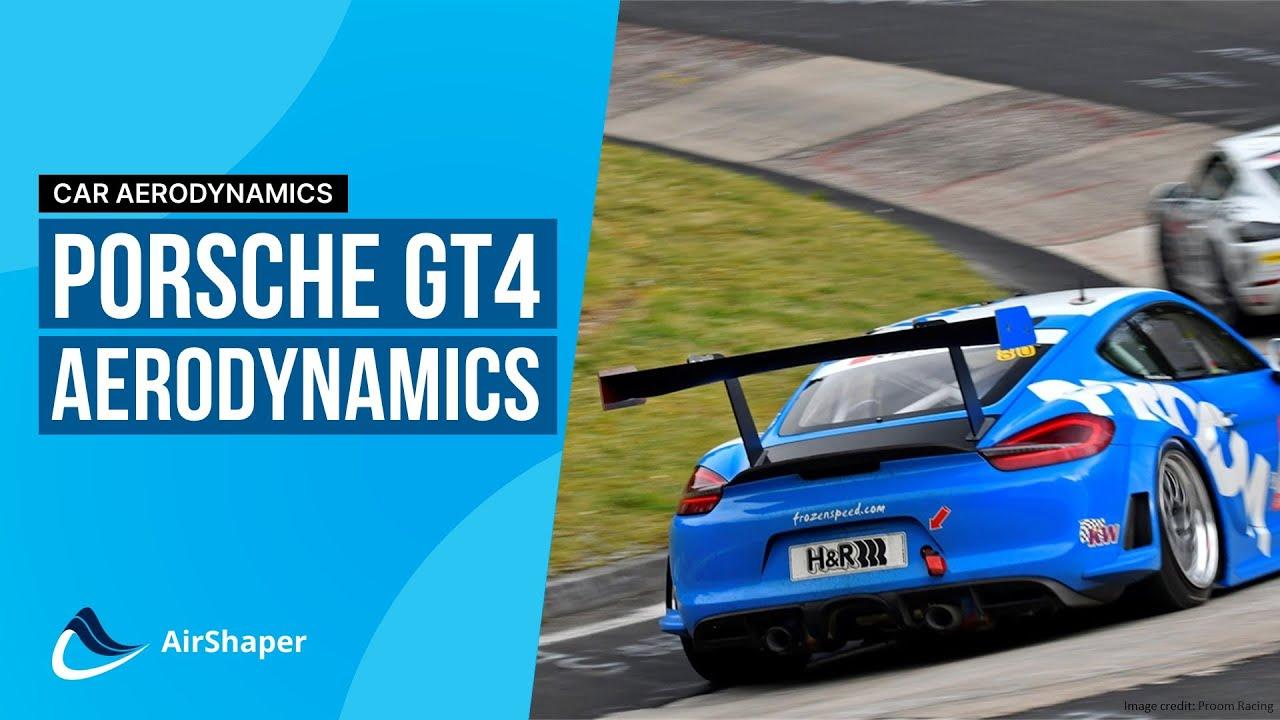Race Car Aerodynamics #2 - Improving the Porsche GT4

Race Car Aerodynamics #2 - Improving the Porsche GT4
For more Porsche videos:
- Porsche Taycan - part 1: https://youtu.be/K2jgsgihZ_w
- Porsche Taycan - part 2: https://youtu.be/kyHjWGnrByQ
- Porsche Taycan - adjoint shape optimization: https://youtu.be/cZAhPQFINZ8
- Porsche Taycan - rear wing optimization: https://youtu.be/-fBXwx_n10I
For more information on race car aerodynamics:
- Aero maps: https://youtu.be/u-GyTRblNmc
- Race car aerodynamics: https://youtu.be/GApwSjKYUpQ
In this video, we’ll be playing with the aerodynamics of the Porsche GT4 race car.
Some people are satisfied with buying a standard Porsche GT4 to go racing. And to be honest, I’d be quite ok with that as well, if I had the budget. But others get creative and start modifying their car to gain that extra bit of performance.
Volker Wawer is one of those people: he wanted to fit wider tires on his GT4 and that meant he needed to shield those tires using wider fenders. But these impact the airflow around the car, possibly blocking the air going into the side air intakes further downstream. As reduced pressure & airflow rate at the inlets translates into a loss of power, Volker wanted to check this using aerodynamic simulations.
There was one problem though: getting a 3D model from Porsche is not so trivial. As an alternative, there are near-exact 3D models made by skilled 3D drafters, which are available for purchase online. As these models are built for visualization purposes, they’re usually built using surfaces and feature quite a lot of gaps & holes. This causes aerodynamic software packages to crash, so we put a lot of effort into it at AirShaper to make our algorithms able to work directly with these so-called open surface models.
So we purchased a Porsche GT4 model and had the wider fenders modeled onto it. We launched 2 Detailed Simulations: the normal GT4 and the one with modified fenders, to clearly see the difference. And we found some interesting results.
To understand how the air flows around the side of the car, we released particles just upstream of the car’s front left fender and traced their path. This showed us that the air that eventually ends up at the side air intakes, doesn’t just come from air going around the side of the car. Part of the breathing air for the engine first rises on top of the front hood of the car, to then tumble down to the side flank of the car after the front wheel arch.
Interestingly, the new front fenders are able to sustain this high airflow on the front hood over a longer distance, reducing the amount of air that passes via the sides, where it loses momentum and gains turbulence at it passes over the front wheels. We measured the pressure at the air intakes for both cars and actually found a higher pressure for the car with the modified fenders.
It doesn’t happen too often, but in this case, Volker got both the wider fenders and a power boost for the engine. In racing, it’s impossible to fully isolate driver & car performance, but both must have been pretty good as he won his next race at the Nürbürgring.
That was it for this video on Porsche GT4 aerodynamics, thanks for watching and see you soon!
-----------------------------------------------------------------------------------------------------------
The AirShaper videos cover the basics of aerodynamics (aerodynamic drag, drag & lift coefficients, boundary layer theory, flow separation, reynolds number...), simulation aspects (computational fluid dynamics, CFD meshing, ...) and aerodynamic testing (wind tunnel testing, flow visualization, ...).
We then use those basics to explain the aerodynamics of (race) cars (aerodynamic efficiency of electric vehicles, aerodynamic drag, downforce, aero maps, formula one aerodynamics, ...), drones and airplanes (propellers, airfoils, electric aviation, eVTOLS, ...), motorcycles (wind buffeting, motogp aerodynamics, ...) and more!
For more information, visit www.airshaper.com


